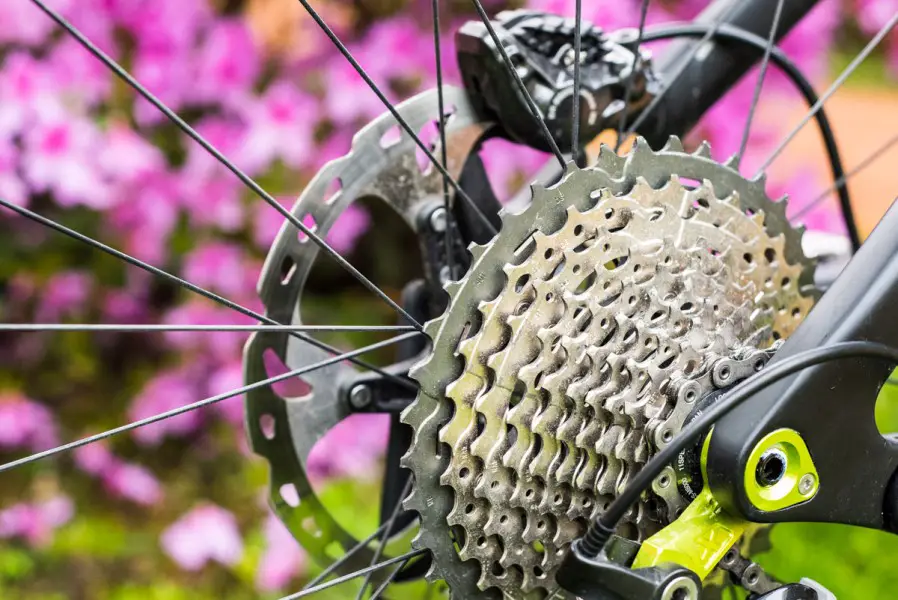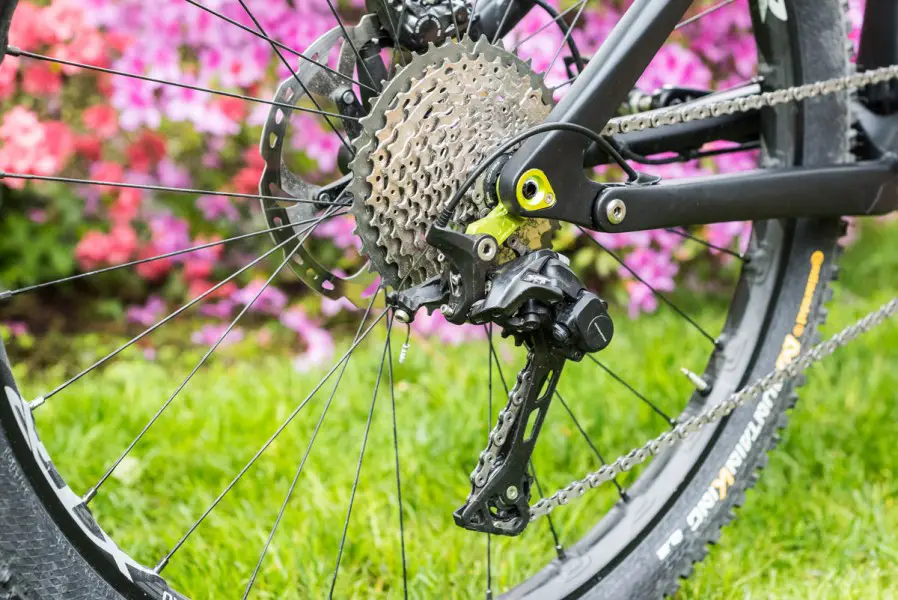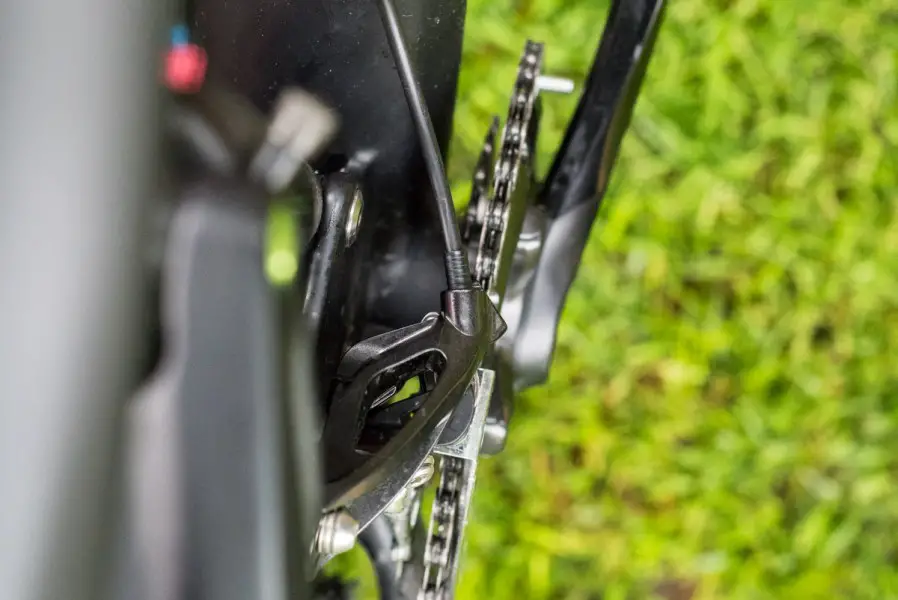While out in Garda testing the new XT groupset we sat down with two of Shimano’s engineers, Tim Gerrits and Kubo San. From fashion to cheeky trails, standards and the future, we wanted to find out what makes them and the Japanese giant tick.
Shimano is using the tagline ‘Components of Adventure’ for XT, what does adventure mean to Shimano?
Kubo San: Adventure is the origin of mountain biking. XT has been around for 33 years now so we like to keep such concepts in mountain biking. There are still many mountain bikers who are into this adventure style so we want to support this activity of all mountain bikers, not just racers. Of course we are thinking racers are mountain bikers, but they are not just this, sometimes you use your mountain bike for a journey or other adventure. We want to support all riders with the XT groupset. One groupset, many choices.
What was the last adventure you had?
KS: Good question! In my case, I love riding in Japan and, well, it’s a bit difficult to explain. I enjoy riding in the mount Fuji area. Proper mountains. Actually, I cannot say where I ride, some of it is a bit, well, the Government…
Ah, I see, we have the same problem! You shouldn’t really be riding there but that’s where the best trails are.
KS: Yeah, yeah! Mainly mountain bikes are difficult to mix with walkers because the speed is different, so there can be problems. There are many walkers in the mountains in Japan and sometimes trouble happens. Then we are prohibited to ride.
XT borrows a lot of technology that was debuted in XTR, how has it been changed to better fit adventure rather than race?
KS: We improved the utility of the components. In the case of XTR it’s designed to win the race, but the role of XT is different. And the price range is different; the XTR rider wants lightweight. If I pay more I want more lightweight, but again XT is different.
More of a balance?
KS: Yeah, yeah. Best performance balanced with price. Actually, total system concept design is always the same, some materials are different to keep performance and price balanced.
Your main rival has made a big deal about their one-by system being designed from the ground up, whereas Shimano has gone for a more, say, refined approach. So for example your new 11 speed cassette will still fit on a 10 speed freehub. What was the thinking behind that? Were you tempted to start from the beginning with a redesign?
Tim Gerrits: Once we set a new level or generation [of components] our engineers are told not to just think about XTR, but about what comes after, to make sure it is compatible. Because we have so many groupsets we know that the market, for example, is also using different components they need compatibility so, the engineering starts with a much larger scope than just a single groupset.
But were you tempted to draw a line in the sand at some point? Like SRAM, for example, said right we’re using an new freehub body for 11 speed…
TG: We’re considering this all the time. Shimano works a bit different. As you said, refined may be one way to say it. But to give you an insight into how Shimano works, we’re constantly developing technologies. So for the engineers, when the idea for a new groupset for the next generation comes up, they have this huge library of technologies where they can pick and choose something, like a bouquet, to make something and then refine it with their engineering, rather than say “Hm, we need something for the market let’s start doing something from the ground up”. These guys have such a resource available to do that we don’t have to start from scratch because we have so much already.
Shimano still clearly believes in a front mech and you’ve really worked on making it better, why is that?
TG: The philosophy of Shimano in anything we produce, and you can get a parallel in carbon, is that we only do something when we can make something better than what currently exists. We don’t compromise. We don’t use carbon just to use carbon, we don’t go single [chainring] just to be single. We think that Rhythm Step’s [Shimano’s name for the the step between gears on their new 11 speed drivetrain] rideability are such important factors for all types of rider. XT is there to please everyone from the XC rider to Enduro rider in every geographical location, so saying, ‘Ah, single is best’, or ‘double is best’, is an easy marketing tool but you’ll always compromise someone. The modularity of this system and the way you can pick and choose a non-compromise setup for your riding conditions is of much greater benefit. It’s not that we are saying we only believe in front shifting it’s just we make a dedicated, non-comprised solution for all riding styles.
As engineers do you get frustrated by fashion, how fickle it can be?
TG: Not fashion, fashion is good because fashion drives innovation but feckless marketing does. Single minded feckless marketing is easy. I’ll give you a quick parallel, I also do the product management for road and there you have a similar story. You have companies saying, ‘we are the most aero’, others saying ‘we are the most light’, others ‘we are the most stiff’. Well what brings you at the end of the day from point A to point B? I had the most aero wheels? I looked the best? It’s a combination of all of these but it’s much harder to market. And this is what we struggle with all the time as engineers, we want to make products to give you the longest and best pleasure and performance from A to B, but that doesn’t market that well. Sometimes.
What does the new XT say about mountain biking at the moment?
TG: That mountain biking is diversifying. We came from ATB a long time ago. And now even if we discuss the term mountain bike, if you are in the US, or in Europe, or even between the UK and the rest of Europe the definition of what is a mountain bike is different.
What do you think about the number of wheel sizes that are proliferating? Do you find it frustrating or is it just something you have to work with?
TG: Wheel size is not so much of an issue, tyre size is the problem. A 29er doesn’t really even exist, it’s a 700cc wheel that was already on trekking bikes. It’s basically three dimensions and the only new one is 650, the others existed forever. It’s the tyre sizes that give us headaches. We made side-pull front derailleurs to keep the clearance there [at the chainstays] that’s why we have the whole wider drivetrain to support our customers and make the Boost [148] related compatibility with the 3mm outboard chainline…
That must require a pretty close relationship with the people you’re supplying. How does that work, do they tell you what they want or do you say to them, this is the way things are going?
TG: It goes both ways. We have a very close relationship with the leading brands, the bigger brands in the global market. We have a huge team of account managers and product managers and we talk to them on a regular basis and they tell us what they think is coming, what trends are coming, and they allow us to come up with a solution. It’s that kind of trust relationship. It’s not like they say, ‘we need that kind of gear’, we would then ask ‘well, why do you need that kind of gear’, then maybe we make that gear or maybe we make something that exceeds their expectations. Because we like to move ahead of people’s needs.
So you might offer them something they previously hadn’t thought of?
TG: Right, exactly, that’s the relationship.
The word ‘standard’ gets used a lot. When does something actually become a standard?
TG: For us a standard is something that is printed in a technical manual. Once we have a drawing up there it’s a standard, anything else is maybe luck. Some people might be using similar but when it’s drawn up in our technical manuals we call it a standard.
From a consumer point of view it can be frustrating when someone says their product is using a new standard, yet it’s only them that is using it…
TG: We call that a direction.
Which feature of the new XT groupset are you most proud of?
KS: One? Hmmm, Side swing front mech for me. You’ve ridden the new XT yes? Then you’ll understand the new shifting performance. Previously you’d have to wait to the end of the shift sometimes for the change, depending on things like suspension or conditions. Now, in any conditions you push that shifting lever and it will have shifted soon, before you even get to the end of the shift. For me this is the product I’m proudest of.
So when people say they don’t want a front mech are you frustrated? Do you wish people would just try it?
TG: Yeah, we get frustrated sometimes. Because the arguments that fire up this discussion are often times something out of our control. If you’re in marketing you have to live with that, but if you’re a technician it’s frustrating that you can’t talk about actual facts.
What’s next for Shimano? I don’t expect to get an inside scoop, but as a broad spectrum thing where is Shimano looking on the mountain bike side.
TG: We’ll follow the mountain bike market, because the mountain bike marketing is changing and dynamic and I think we need to stay on top of that and make sure we are in a position to give valued propositions that are ahead of the expectations, instead of following with a certain gear number or certain specification that’s suddenly in demand. It’s what drives us.
Comments (1)
Leave Reply
Post Comment






Fantastic first photo. Really enjoyed the interview too.
Would be happy to ready twice as much.